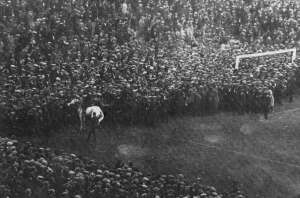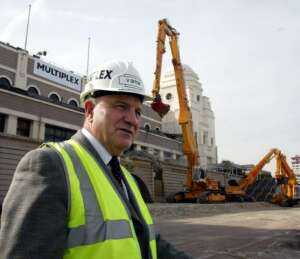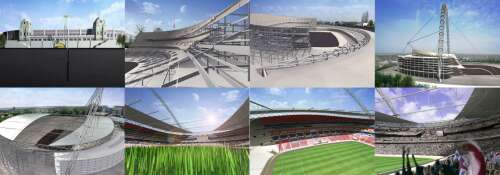|
Still, at least your unlikely to do your bank balance any lasting damage through a bit of fun. If you’re really lucky – or clever, or both – you might even find you can allow other people to foot the cost on your behalf. When you’re dealing with a national stadium, then the cost is not so easily forgotten – particularly when the cost is £750 million.
Seven hundred and fifty million quid. According to this week’s census data, if every citizen of Britain (not just England) - regardless of age - gave a tenner, then there would still be the small matter of 150 million left outstanding. It probably works out at around a million pounds for every football club in the senior pyramid.
Perhaps more significantly, Twickenham, home of the RFU, cost barely a tenth of that, and the Millennium Stadium just a third. Both are impressive stadiums with a capacity of above 70,000, with corporate hospitality, fine views from all seats, and excellent acoustics – all things which apparently justify the cost of new Wembley. Both those stadiums were judged potential venues for the FA cup final during the redevelopment years, and Cardiff has already emerged with great credit for its performance in hosting the event.
It is an astonishing figure. It would be flamboyant if English football was still booming. But, as we know only too well, it is not. And the new Wembley stands in danger of being a remarkable symbol of a game spiralling towards disaster, a paradox of the game it is supposed to represent.
There is no question that the stadium we will be left with will be an architectural masterpiece. Whether it will be quite so good for playing football in only time will tell, but that is not the chief consideration in the rebuilding of Wembley. It is a stadium which has been built to satisfy the egos of all those who have played a part in creating the vision – the architect, Sir Norman Foster, and those within the football fraternity such as Ken Bates, whose obsession with creating a grander corporate version of his Chelsea village creation would have been comical were it not such an embarrassment, and whose influence lasted after his ousting from the project board. Then of course, there are the political considerations – the need for a grandiose symbol of British regeneration to win votes and try to save face after choosing the wrong location and a business plan based on making the stadium an attraction rather than a facility.
|
If you were starting from scratch, then Wembley would not even be considered as the site for a national stadium. Within the London area, a site would probably be suggested on the northern side of the M25 somewhere, with modern and efficient road and rail links to the ground. More likely, a site within two and a half to three hours of anywhere in the country would be suggested, for purely practical reasons. The only argument in favour of rebuilding Wembley is an abstract notion of sentimentality towards the old stadium. That is fair enough: that sort of emotional logic is part of football’s core appeal. But where that argument falls down is in the fact that the stadium is to be rebuilt from scratch. Everything special and unique about the old Wembley – the twin towers, the running track around the ground which the players had to slowly cross as they entered the arena – will be lost in the new ground. It will be the sort of sanitised football environment so beloved of modern designers. It will inherit all Wembley’s problems, but retain none of the charm.
In time, it may create an aura of its own. I certainly hope so, because otherwise it will surely prove to be an expensive mistake. It will be run on a risky business plan reliant on high spending corporate guests. If they do not arrive, then English football will leak money like a sieve.
One final thought. The FA is to commit almost £150 million to this project. It was originally committing around £100 million. If the FA has found an extra 50 million pounds wasting away in a bank account somewhere, then a national stadium is the least of its priorities. As the guardian of the national game, it bears a paternal responsibility towards the clubs that it represents. Perhaps the 50 million should have been placed in an emergency fund from which clubs in danger of administration could draw temporary loans whilst they got their finances in order. There is something perverse in the players union bailing clubs out whilst the organisation at the pinnacle of the game in this country absorbs itself in futuristic visions and grand plans.
So now the bulldozers have moved in. Let the money wasting begin.
|



